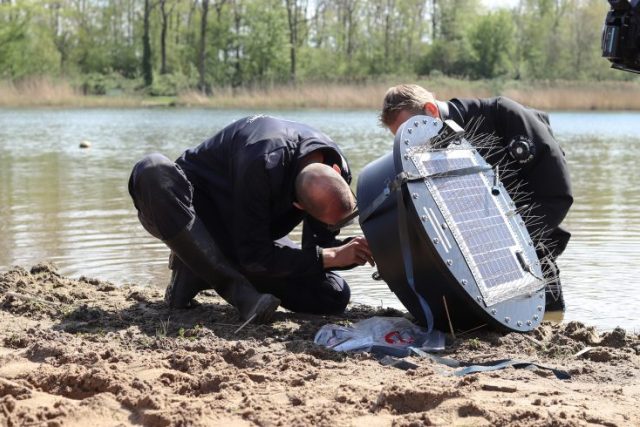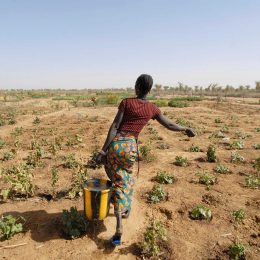The Water Forecast from the Wylerbergmeer
The Water Forecast project was officially launched with the installation of a monitoring buoy and a weather station at the Wylerbergmeer lake on 21 April. The Netherlands Institute of Ecology (NIOO-KNAW), research institute Deltares and the Royal Netherlands Meteorological Institute (KNMI) are joining forces in this project to combine existing weather, water and cyanobacteria models to predict problems with cyanobacteria in a ‘water forecast’.
Monitoring buoy and weather station
Leisurelands, the owner of the Wylerbergmeer lake, is very enthusiastic about the project, and the company was happy to open up the lake as a trial location for the researchers. Monitoring will take place at the lake during the 2022 bathing season from May to September using a measuring buoy in the water for the cyanobacteria, and a weather station on land.

Cyanobacteria
Cyanobacteria – aka blue-green algae – are microscopic organisms that are present all over the world in fresh water. The excessive growth of cyanobacteria is a sign that water quality and the nature that depends on it is not doing well. Some cyanobacteria produce toxins, and so they are a risk for the health of people and animals. Temperatures are rising because of climate change and, as a result, so is the risk of problems with cyanobacteria.
Large amounts of cyanobacteria (‘cyanobacteria blooms’) make bathing impossible. People can suffer gastrointestinal problems and cyanobacteria can be even more harmful for pets.
“Cyanobacteria outbreaks are increasing in number and size because there are too many nutrients in the environment,” explains NIOO researcher and cyanobacteria expert Dedmer van de Waal. “In all probability, climate change will only exacerbate this problem. At the same time, there will actually be a greater need for cooling water. As scientists, we want to use our knowledge to contribute to solving the challenges facing society as a whole. This Water Forecast project is a good example.”

Plume forecast
In addition to the weather forecast and the expected cyanobacteria problems, the uncertainty of these forecasts is also taken into account. The uncertainty of a forecast usually increases further into the future. The plume visualises that uncertainty. Peter Siegmund of the KNMI explains: “The uncertainty in the cyanobacteria forecast is what makes our project unique. We show the forecast with a plume in a dashboard, and the water management authority must be able to see at a glance what the situation is.
The KNMI plume forecast and NIOO’s water quality monitoring data are used by Deltares to make cyanobacteria forecasts with the AlgaeRadar. The AlgaeRadar predicts the concentration of cyanobacteria. This allows the water management authority to make a better assessment of the risk of cyanobacteria problems and to monitor the water more effectively.
As a result, bathing locations can be opened up immediately when the water is safe again. In this way, we will be able to cool off in the water as often as possible in the way we will actually need as the climate warms up.”
Tackling cyanobacteria problems in the Wylerbergmeer
For years, the Wylerbergmeer lake has been plagued by excessive amounts of cyanobacteria that have frequently made bathing impossible. In recent years, the algae have been tackled in different ways. But unfortunately without the desired result as yet.
For the owner of the lake, Leisurelands, it is vitally important to solve this problem sustainably. “Ultimately, of course, we don’t want any more problems with cyanobacteria in the lake and we are happy to help science by opening up the Wylerbergmeer,” clarifies Kees Rutten of Leisurelands.



